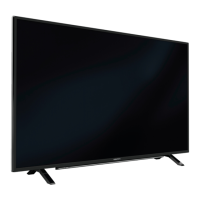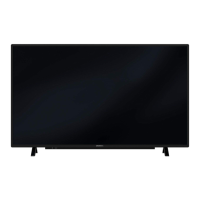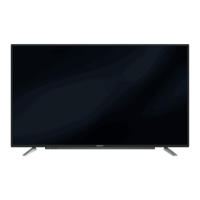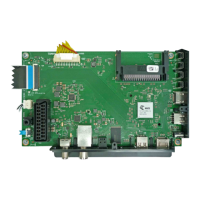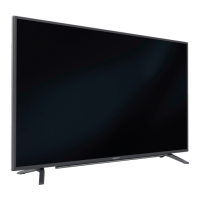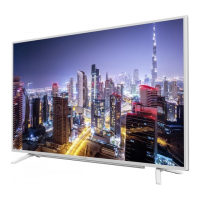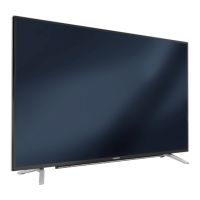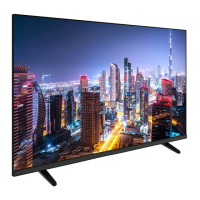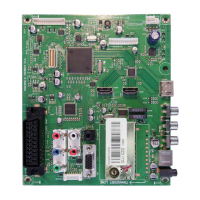
Do you have a question about the Grundig 32 GFB 6820 and is the answer not in the manual?
| Screen shape | Flat |
|---|---|
| Display diagonal | 32 \ |
| Display technology | LED |
| Peak luminance ratio | 65 % |
| Display diagonal (metric) | 80 cm |
| Screen format adjustments | 16:9 |
| Motion interpolation technology | PPR (Picture Perfection Rate) 800 Hz |
| 3D | - |
| Annual energy consumption | 59 kWh |
| Channels quantity (DVB-C) | 1000 |
| Channels quantity (DVB-S2) | 6000 |
| Channels quantity (analog signal) | 100 |
| RMS rated power | 28 W |
| Number of speakers | 2 |
| AC input voltage | 220 - 240 V |
| AC input frequency | 50 - 60 Hz |
| Power consumption (standby) | 0.3 W |
| Power consumption (typical) | 40.1 W |
| Tuner type | Analog & digital |
| Channels quantity | 8100 channels |
| Digital signal format system | DVB-C, DVB-S2, DVB-T2, DVB-T2 HD |
| DVI port | No |
| HDMI ports quantity | 3 |
| DVI-D ports quantity | 0 |
| USB 2.0 ports quantity | USB 2.0 ports have a data transmission speed of 480 Mbps, and are backwards compatible with USB 1.1 ports. You can connect all kinds of peripheral devices to them. |
| Ethernet LAN (RJ-45) ports | 1 |
| Product color | Black, Silver |
| Panel mounting interface | 100 x 100 mm |
| Package depth | 142 mm |
| Package width | 797 mm |
| Package height | 540 mm |
| Depth (with stand) | 178 mm |
|---|---|
| Height (with stand) | 484 mm |
| Weight (with stand) | 6600 g |
| Depth (without stand) | 76 mm |
| Width (without stand) | 735 mm |
| Height (without stand) | 443 mm |
| Weight (without stand) | 5400 g |
Relevant for preventing hazards like electric shock, fire, and physical injury.
Guidelines for responsible disposal and energy saving.
Overview of TV capabilities and digital signal reception requirements.
Details on reducing energy consumption and responsible usage.
Advice on preventing screen burn-in from static images.
Explanation of the SCR system for satellite reception.
Lists included and available accessories for the TV.
Steps for connecting the TV to antenna and power sources.
Instructions for setting up the TV on a stand or mounting it.
Guide for inserting batteries into the remote control.
Identifies all external connection ports and physical TV controls.
Explains fundamental operations like standby and volume adjustment.
Details main and all functions of the remote control.
Guide for connecting the TV to home network via LAN or WLAN.
Visual guide to the channel setup process.
Step-by-step walkthrough of the initial TV configuration.
Detailed steps for LAN and wireless network connections.
Instructions for searching digital satellite channels.
Instructions for tuning digital cable channels.
Instructions for tuning digital terrestrial channels.
How to manage digital channels and the program table.
Tools for searching, deleting, and moving channels.
Creating, sorting, and deleting favorite channel lists.
Renaming favorite lists and AV input channels.
Configuration of display quality, including advanced options.
Configuration of audio output, modes, and features like DTS TruSurround.
Settings for stereo/dual channel, equalizer, and automatic volume.
Basic functions like power, channel selection, volume, and display info.
Options for selecting audio and subtitle languages.
Feature to save and quickly switch between favorite channels.
Adjusting picture format, zoom, and sleep timer.
Configuring audio presets and picture formats like Panorama/Overscan.
Customizing the display of the TV program guide.
Introduction to the interactive teletext standard.
Guide to using HbbTV features and managing its activation.
How to use different Teletext modes and additional features.
Lists video, image, and audio file types compatible with USB.
Steps for safely connecting and disconnecting USB storage.
Navigating and managing files on connected USB devices.
Basic playback controls for USB media.
Advanced playback options like chapter selection, repeat, and search.
Accessing and playing media files over a home network.
Controls for playback and other options within the media server mode.
Accepting user agreements and initial setup procedures.
Using internet apps and connecting keyboards/mice.
Selecting, displaying, and favoriting internet applications.
Navigating the main screen and application portal.
Features and operation of the built-in web browser.
Setting menu, audio, subtitle, and keyboard languages.
Options for deaf/hard of hearing and visually impaired users.
Adjusting auto sleep, logo display, and LED brightness.
Enabling automatic screen shut-off during audio playback.
Setting the TV to turn off or on automatically.
Setting a specific time for the TV to switch off.
Setting up parental guidance and locking menus.
Managing PIN codes and blocking specific channels.
Viewing blocked channels and resetting the PIN.
Setting the TV's date and time automatically or manually.
Viewing device info and performing software updates.
Information on connecting external accessories like keyboards.
Restoring TV to default settings or clearing channel history.
Explanation of CEC control for connected devices.
Managing remote control behavior for external devices.
Connecting HDTV sources and understanding connection types.
Guide to connecting various devices via digital and analog signals.
Connecting devices like DVD players, headphones, and Hi-Fi systems.
Configuring audio output via HDMI ARC and Hi-Fi systems.
Using Miracast for wireless screen sharing.
Installing and using CA modules for encrypted channels.
Steps for establishing a wired network connection.
Steps for establishing a wireless network connection.
Adjusting network settings and changing the TV's network name.
Searching for satellite channels and configuring antenna settings.
Setting up and controlling a motorized satellite antenna.
Tuning channels from cable and terrestrial sources.
Managing analogue channels and tuning them.
Technical details on Wi-Fi and network interfaces.
Dealer information and product compliance details.
Advice on Wi-Fi usage and regional limitations.
Instructions for product disposal and environmental considerations.
Explanation of symbols found on the TV.
Solutions for common TV problems.
Explanations of key terms used in the manual.
